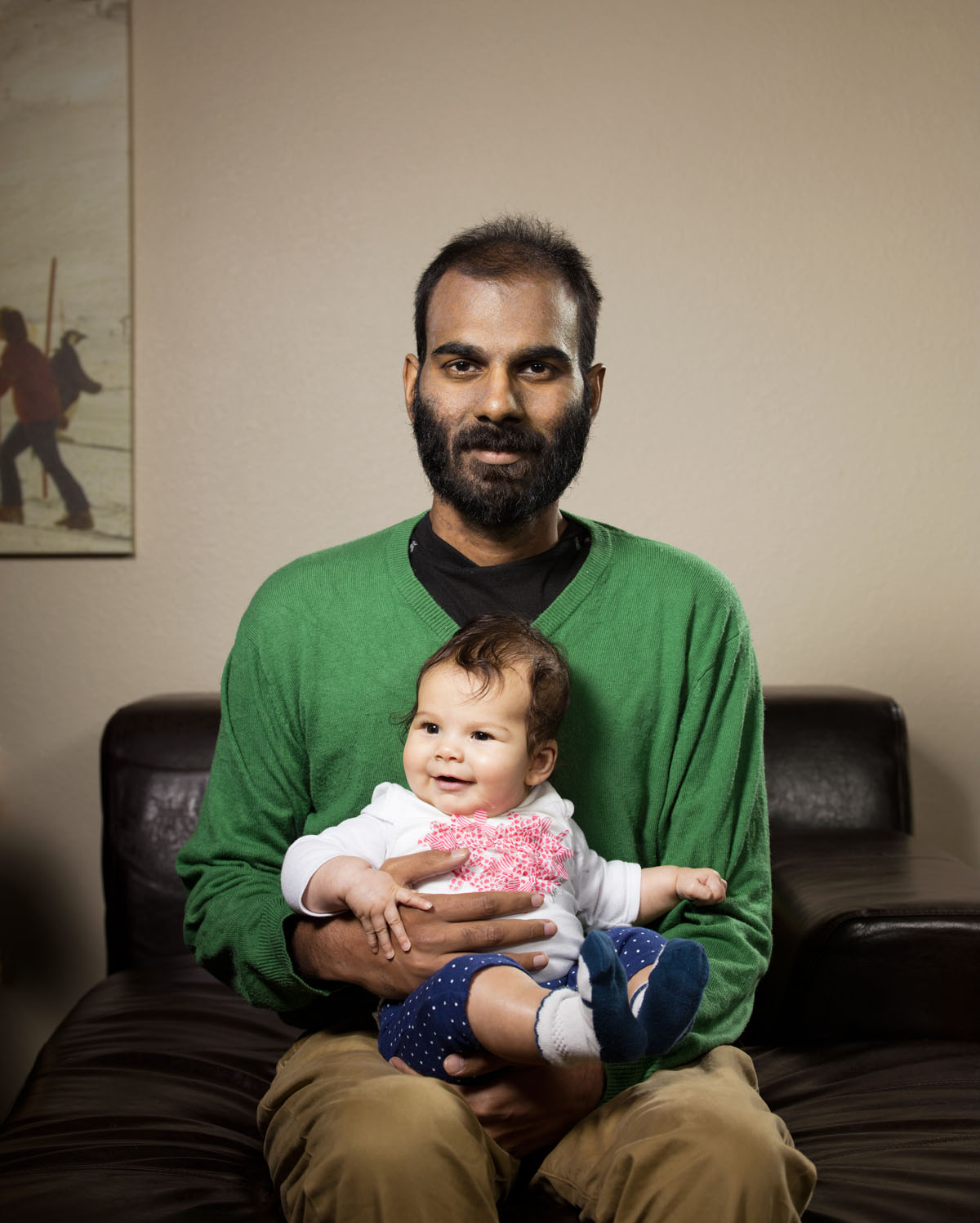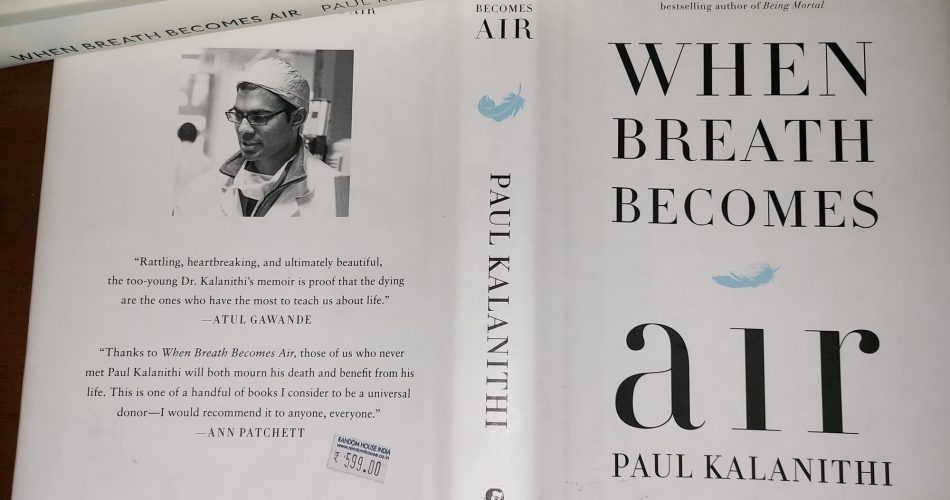This is a book I bought on a whim after reading Being Mortal by Atul Gawande, but have been avoiding to read. You may ask why? Because, When Breath Becomes Air by Paul Kalanithi deals a subject we all fear to confront, and that is death. Paul was a talented Neurosurgeon, who had treated numerous patients, before being diagnosed with Stage IV Lung Cancer and dying at the early age of 36.
Before coming to medicine, Paul had a Masters in English Literature and maybe because of this, his prose in the book was very fluent. The language in the first part titled “In perfect health I begin” was brilliant, it was free flowing and it was a joy reading it. It dealt with his childhood, his fascination with reading due to his mother’s comprehensive “college prep reading list”, and then he taking up English major. His father was a Christian, his mother a Hindu, and their marriage was condemned on both sides. His parents had eloped from South India to settle first in New York, and, then moving to a small desert town of Kingman, Arizona, where Paul grew up.
One day, his girlfriend hands him a copy of Satan: His Psychotherapy and Cure by the Unfortunate Dr. Kassler, J.S.P.S. by Jeremy Leven. Paul says “It should have been funny, but it wasn’t. However, it did make the throwaway assumption that the mind was simply the operation of the brain, an idea that struck me with force…Though we had free will, we were also biological organisms – the brain was an organ, subject to all the laws of physics, too! Literature provided a rich account of human meaning; the brain, then, was the machinery that somehow enabled it. It seemed like magic.” This leads Paul to do a M.Phil in Biology. Later, when he had a choice to become a Chef or be a scientist, his biology adviser pushed him towards science and eventually he took up specializing on Neuroscience.
The next section was his experience at the med school. I found it to be quite revealing on what a person preparing to be a Doctor (a surgeon to be precise) goes through. He says “In anatomy lab, we objectified the dead, literally reducing them to organs, tissues, nerves, muscles. On that first day, you simply could not deny the humanity of the corpse…In our rare reflective moments, we were all silently apologizing to our cadavers, not because we sensed the transgression but because we did not.” He goes on to add “Medical school sharpened my understanding of the relationship between meaning, life, and death.” Then, after years of learning, practicing, putting in long hours day-after-day, he becomes the Chief Resident in the Neuroscience department at Stanford. He goes on to treating numerous patients on some really tough cases, improving countless lives and saving many.
By then, he had married his college sweetheart Lucy and they were planning to start a family. When his career seems to be set, the decades of preparation and arduous work about to payoff, he gets the shock of his life – his diagnosis of having Cancer. For months, he was experiencing a severe back pain which he was ignoring due to his busy schedule with numerous surgeries every day. Paul writes “Severe illness wasn’t life-altering, it was life-shattering. It felt less like an epiphany-a piercing burst of light, illuminating What Really Matters – and more like someone had just firebombed the path forward. Now I would have to work around it.“.
After the diagnosis, first he finds it difficult to believe, then he cries, denies, asks the common question “Why me, why now after years of hard work I have put”, then after the meeting with his oncologist Emma Hayward, he starts on a long journey of acceptance – then to prepare to live a meaningful life in the time that was remaining for him. In the next 18 months, he goes through various treatments and brief period of recovery, before the relapse; during this time he was blessed with a baby girl Cady. And, when the inevitable was clear he decides to request a “do not resuscitate” before breathing his last on the March 9, 2015. The book remained unfinished, and the last chapter, the Epilogue was written by his wife Lucy who had stood with him throughout the ordeal. Lucy writes “This book carries the urgency of racing against time, of having important things to say. Paul confronted death – examined it, wrested with it, accepted it – as a physician and a patient. He wanted to help people understand death and face their mortality. Dying in one’s fourth decade is unusual now, but dying is not“.
For me, the second part was tough due to the painful subject being narrated, still the book was overall a worthy read. It is sure to raise the question on what’s the most meaningful thing to do with our life?
Paul Kalanithi and his daughter, Cady. Courtesy: An Article in Stanford Medicine



Venkat, Absolutely a fabulous book and makes us one again realise the mortality. We could make plans to achieve goals and cannot be certain.
Very inspiring. I have gifted this to many.